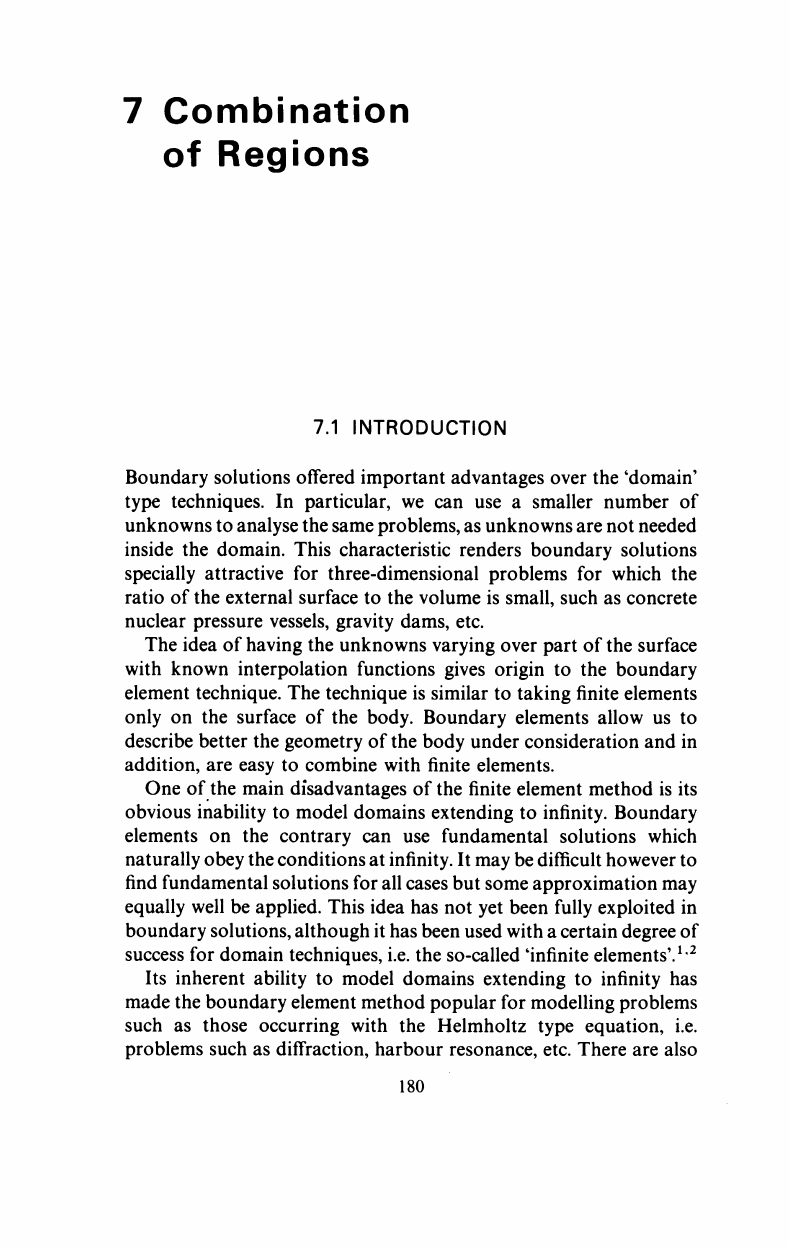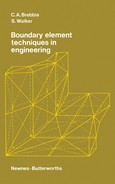
7 Combination
of Regions
7.1 INTRODUCTION
Boundary solutions offered important advantages over the 'domain'
type techniques. In particular, we can use a smaller number of
unknowns to analyse the same problems, as unknowns are not needed
inside the domain. This characteristic renders boundary solutions
specially attractive for three-dimensional problems for which the
ratio of the external surface to the volume is small, such as concrete
nuclear pressure vessels, gravity dams, etc.
The idea of having the unknowns varying over part of the surface
with known interpolation functions gives origin to the boundary
element technique. The technique is similar to taking finite elements
only on the surface of the body. Boundary elements allow us to
describe better the geometry of the body under consideration and in
addition, are easy to combine with finite elements.
One of the main disadvantages of the finite element method is its
obvious inability to model domains extending to infinity. Boundary
elements on the contrary can use fundamental solutions which
naturally obey the conditions at infinity. It may be difficult however to
find fundamental solutions for all cases but some approximation may
equally well be applied. This idea has not yet been fully exploited in
boundary solutions, although it has been used with a certain degree of
success for domain techniques, i.e. the so-called 'infinite elements'.
1,2
Its inherent ability to model domains extending to infinity has
made the boundary element method popular for modelling problems
such as those occurring with the Helmholtz type equation, i.e.
problems such as diffraction, harbour resonance, etc. There are also
180
..................Content has been hidden....................
You can't read the all page of ebook, please click here login for view all page.
